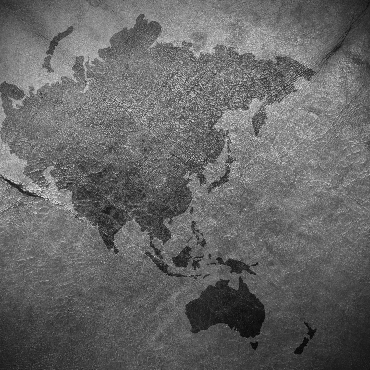CLIMATE CHANGE AND U.S. INTELLIGENCE
A joint report from the eighteen constituent agencies of the U.S. Intelligence Community has warned that climate change poses a notable – and growing – threat to national security. Presuming that global temperatures rise by 1.5 degrees Celsius by 2030, the new National Intelligence Estimate lists a series of potential national security-related consequences, ranging threats to territorial integrity as a result of rising sea levels, to population displacement, to economic realignments and political instability caused by food scarcity.
The study breaks new ground for the IC, which has traditionally steered clear of climate change as an area of focus. "The overwhelming focus of intelligence communities across the globe is still on post-Cold War structures — stealing other people’s secrets. And we are now in an age of globalized challenges, the primary one being climate change, but also the bio revolution and biosecurity, cyber, and disinformation," explains Harvard’s Calder Walton. "Climate change and pandemics are linked; climate change will, scientists tell us, create more new disease outbreaks. And then, add in synthesized biology; we have cyber, artificial intelligence, and machine learning. These are globalized challenges that will affect societies across the world. We are really at an inflection point in terms of the way that we understand intelligence and national security." (dni.gov, 2021; Harvard, 2021)
A NEW WORRY WITH REGARD TO CHINA: BATTERIES
Back in November, Deputy Defense Secretary Dr. Kathleen Hicks warned that the U.S. military is now engaged in a resource race with a rising – and increasingly energy hungry – China. "A healthy battery supply chain is essential to the military," Hicks outlined. "When it comes to batteries, America needs to lead the world. That means innovation, but it also means manufacturing, ensuring we have healthy supply chains to get what we need, when we need it," she said during a presentation at Wayne State University. "It is estimated that investment committed to the global lithium ion battery supply chain is approaching $1 trillion. The problem, however, is that China presently dominates that supply chain."
In response, Hicks laid out, the Defense Department is working on "improving the U.S. competitive position" by partnering with industry to ensure a stable domestic supply of lithium batteries. To that end, the Pentagon has invested $6.8 billion dollars in Detroit for lithium processing specifically for military, use as well as focused on expansion of lithium mining in the U.S. The objective, according to Hicks, is to "increase resiliency in the supply chain, which strengthens our industrial base." (Defense.gov, November 8, 2021)
STUDY: MILITARY EMISSIONS UNDERREPORTED
While the Paris Climate Accords have laid out benchmarks for lowering national emission levels, they contain a significant loophole, a new study from the group Scientists for Global Responsibility (GSR) has found. Specifically, the Accords allow participating nations to omit their emissions generated by their respective militaries from their reporting, thereby artificially lowering the emission levels they declare. The omission is significant, the globe’s militaries are estimated to be cumulatively responsible for 6% of all global emissions. "With military spending rapidly rising, this loophole is set to grow at a time when other emissions are falling. The seriousness with how these nations deal with this issue will affect action in other sectors and in other nations," according to SGR’s executive director, Stuart Parkinson.
For instance, while the British Ministry of Defense reports a total annual carbon footprint is 3 million tons of carbon dioxide equivalent (CO2e), a recent SGR tally suggests the true number to nearly three times that amount. In the same report, SGR researchers estimated U.S. emission rates to be nearly 205 million tons of CO2 in 2019, significantly higher than the official Pentagon figure of 56 million tons. Brown University’s Costs of War project has confirmed SGR’s findings, stating that in 2019 the U.S. military was "the largest single source of greenhouse gas emissions in the world." (The Guardian, November 11, 2021; SGR, 2021)
INDIA, RUSSIA EYE ARCTIC ENERGY
"The possibilities of joint development of hydrocarbons on the Arctic shelf and in Russia’s Far East are under consideration," Kremlin aide Yuri Ushakov told reporters in December. Ushakov was referring to new inroads that India and Russia are cooperatively making in the exploration and exploitation of the Arctic. The relationship between Moscow and New Delhi has expanded significantly in recent years, and trade is growing substantially (up by some 38% in the period from January to September 2021). The focus on the hydrocarbon wealth of the Arctic is a natural next step for the burgeoning relationship. (Itar-TASS, December 3, 2021; IDSA, December 6, 2021)
Want these sent to your inbox?
Subscribe
Resource Security Watch No. 41
Related Categories:
International Economics and Trade; Resource Security; Arctic; Antarctic; China; India; Russia




